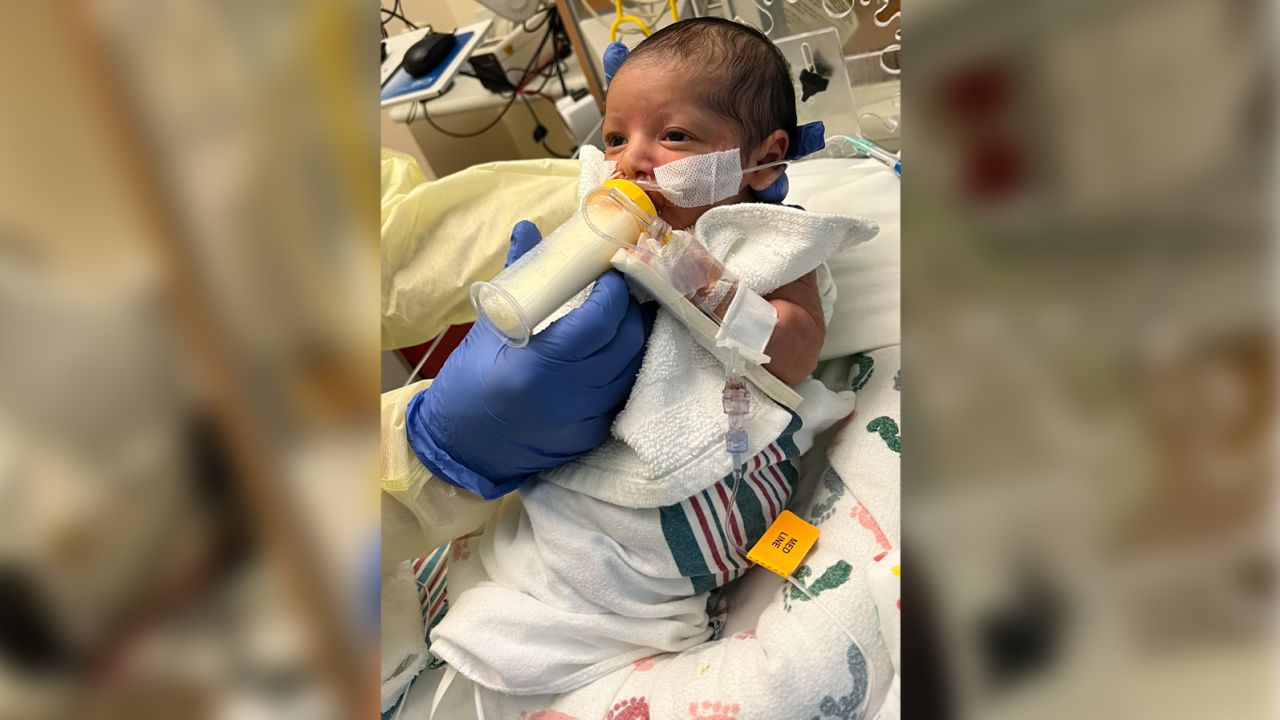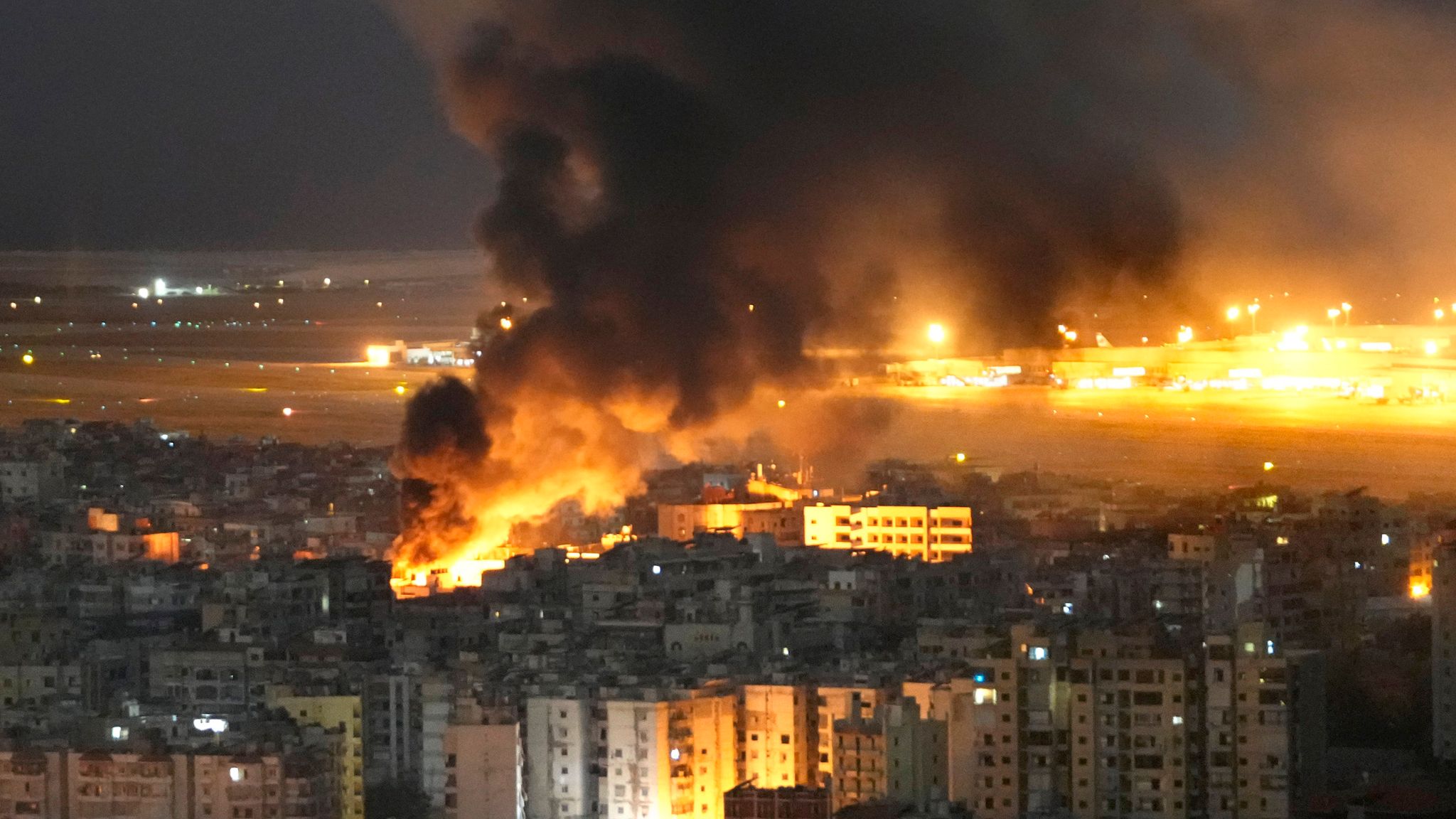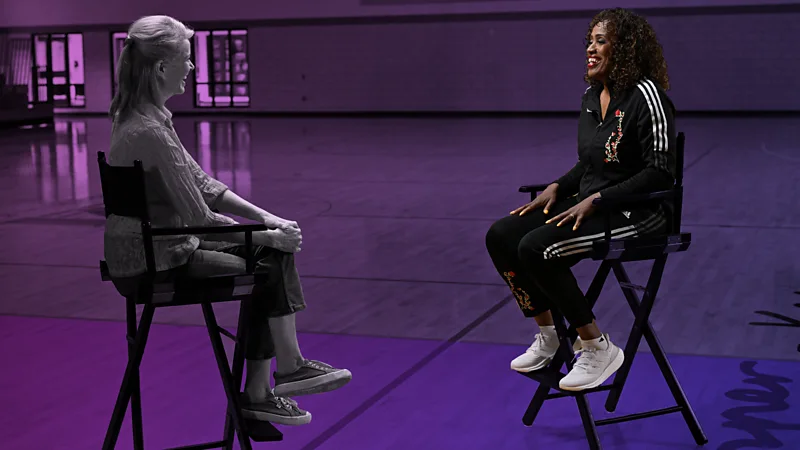Their preemie was already a fighter. Then at 3 weeks old, she caught the virus that’s packing hospitals across the US

As Abhishesh Pokharel carried his 3-week-old daughter into the emergency department, her fingers and toes were turning blue.
Other parts of her tiny body were yellow.
Something was very wrong.
The triage nurse at Greater Baltimore Medical Center knew it, too. She took one look at baby Ayra and gave her father an order:
Run!
Across the building he sped, his wife right behind him – to the pediatric emergency department.
By then, Ayra was sometimes not breathing at all, clinicians later told CNN.
The rapid response team went to work.
Still, “she was not responding to anything that they were doing,” Pokharel recalled.
“My mind just froze and thought I may not get her back.”
Ayra – born a preemie at just 36 weeks and 6 days – had already proved to be a fighter: Her first day on Earth was spent in the NICU because of fluid in her lungs.
Since then, she’d been healthy, her father said.
But now, her fragile body was caving to one of several respiratory illnesses spreading across the US: respiratory syncytial virus, or RSV, which often is most severe in young children and older adults.
While for most it causes a mild illness that can be managed at home, RSV – alongside flu, the coronavirus that causes Covid-19 and other common respiratory viruses – has driven an increase in hospitalizations nationwide. And pediatric hospitals are feeling the strain, with more than three-quarters of their hospital and ICU beds occupied for the past few months.
More than half of US states report high or very high respiratory illness activity, and US officials are begging people, including kids, to get the flu shot and Covid boosters ahead of Thanksgiving.
But for RSV, there is not yet a vaccine – nor an antiviral or specific treatment.
As baby Ayra’s blood oxygen level hit 55% – far from the 95% or better it should be – her parents could only watch, tears filling their eyes as they overheard clinicians say their newborn wasn’t responding.
“I was lost,” recalled Ayra’s mom, Menuka KC. “It was a nightmare.”
The staff at the pediatric ER in Towson, Maryland, was already overwhelmed by a crush of respiratory illnesses so severe it had for weeks claimed virtually every pediatric ICU bed in the state.
But as Ayra lay before them, they knew they had to act.
Fast.
From a running nose to a ventilator in only a few days
Knowing Ayra could have gone into respiratory arrest right there in the waiting room “sent heart palpitations through all of us,” said Dr. Theresa Nguyen, the center’s interim chair of pediatrics.
The infant was lethargic, breathing quickly – sometimes not breathing at all. Thick mucus filled her nose and went down as far as her lungs, Nguyen said.
Her prematurity “increased her risk of how her body would react to the RSV virus,” the doctor explained.
It had been just 10 days since the older Pokharel daughter, 4-year-old Aavya, had gotten sick with a fever and runny nose that her pediatrician diagnosed as viral and ear infections, their dad said.
Five days later, on October 13, the couple noticed Ayra started having a runny nose and mucus that they had to remove with a suction ball, Pokharel said. They took her to her doctor for a scheduled check-up and were told she had a viral infection, though her lungs were clear and she had no fever.
But monitor her, they were told.
Three days after that, they took Ayra back because she had a bad cough, and the couple could barely hear her cry.
Two days later, here they were in the pediatric emergency department, with doctors now telling them intubation was Ayra’s best bet.
Inserting a tube into Ayra’s airway and attaching a breathing machine would give the infant the oxygen she needed, the doctors explained.
Ayra was on the brink of death.
She needed to be intubated immediately, the doctors said, before she stopped breathing.
Her parents waited just outside the room and prayed for God to save her and bring her back to them as the medical team carefully and swiftly intubated Ayra.
Immediately, her blood oxygen bounced back to a safer level.
But more hurdles lay ahead.
Hunting for a place for an infant to try to heal
Greater Baltimore Medical Center could not keep Ayra – or any intubated child who needs to be on a ventilator – because that level of care requires a pediatric ICU, Nguyen explained.
The discussion quickly turned to where to send her for more care.
Hospital staff took to the phones.
Sending patients to other facilities for treatment is common during the height of flu and RSV seasons, Nguyen said.
But this year, the need had started rising much earlier.
-cnn






